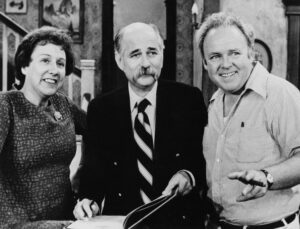The Lear Empire: A Cultural Phenomenon
Norman Lear achieved something that tens of thousands of business geniuses and consumer theoreticians spend half the energies of the Republic vainly striving after: a natural “feel” for what the public wants before it knows it wants it, and the ability to deliver it. At the height of his success, six of Lear’s shows broadcast every week to prime-time audiences: “All in the Family,” “Maude,” “Good Times,” “The Jeffersons,” “Sanford and Son,” and “hot l baltimore.” Five of these programs ranked among the dozen most popular in the nation.
The numbers are staggering. Roughly 120 million Americans watched Norman Lear comedies each week—totaling approximately five billion viewers every year. This wasn’t just success; it was cultural dominance on a scale rarely seen in entertainment history. Lear seemed to possess that uncommon gift of understanding the American psyche and reflecting it back through the television screen.
His newest venture, “hot l baltimore,” named after a run-down Hotel Baltimore, populated the screen with prostitutes, homosexuals, and other social misfits. Despite wariness from network-affiliate stations—several of which worried Lear was pushing his gift for jokey topicality too far—the show received a warm reception after just six weeks, proving once again that Lear understood his audience better than the executives did.

The Paradox of Unfunny Comedy
What’s surprising about Lear programs is that they aren’t very funny. The level of acting and stage presence generally exceeds the quality of humor in each show. The jokes and situations are competent but rarely brilliant. Lines like “In my building, the roaches are so big that the crunch drowns out the television” or “Deep down, he respects you”—”Yes, but I don’t want to dive that deep” represent the typical quality of Lear humor: serviceable, occasionally clever, but hardly groundbreaking.
There are few unusual comedy routines in Lear comedies and virtually no striking new comedy characters, with the possible exception of Archie Bunker. Even Bunker was transplanted from the BBC series “Till Death Us Do Part” and derives from a mass-entertainment cartoon tradition stretching from William Bendix and Wallace Beery back to Sancho Panza and Shakespeare’s Pistol.
Bunker gets most of the best lines but relies heavily on easy malapropisms: “Salivation Army,” “Let him who is without sin be the rolling stone,” and “‘Pilferers will be prosecuted’ means ‘Queers stay out of the men’s room.'” Much of the comedy aura derives from television’s electronic institutionalizing of the theatrical claque—the taped audience laughter that rises and falls, whoops and giggles, creating a blurry identity like a lunatic Greek chorus, nudging isolated viewers into an impression of high spirits.

Anger as Entertainment
If the humor in Lear comedies is merely professional, what’s truly visible is the level of anger. While the sound track laughs, the characters mainly snarl. Archie Bunker stands as the prototype of the Lear angry-man character. When Bunker first appeared in 1971, representing the politically and socially threatened silent-majority blue-collar worker, his outbursts on politics and race seemed quaintly liberating and timely. They had specific quality and direction: blacks moving into the neighborhood or being hired at nearby factories.
However, Bunker’s anger has become random—a musical note methodically sounded by the script as it travels through each half hour. It’s accepted stage business, anger for anger’s sake. This transformation reveals something crucial about Lear’s formula: he discovered that American audiences responded not to comedy’s traditional release of tension through laughter, but to the validation of their own frustrations and rage.

The Secret Formula
This is what made Norman Lear’s empire so fascinating and successful. He didn’t create better jokes or more memorable characters than his competitors. Instead, he created a space where anger could be performed, witnessed, and somehow legitimized through the framework of comedy. His characters weren’t just funny—they were furious, and that fury resonated with millions of Americans who felt similarly frustrated with the rapid social changes of the 1970s.
The genius of Lear’s approach was making anger acceptable entertainment for the whole family. By wrapping rage in the package of situation comedy, complete with laugh tracks and happy endings, he allowed viewers to experience and express emotions that might otherwise have been uncomfortable or socially unacceptable. The comedy became a socially sanctioned outlet for the tensions bubbling beneath American society.